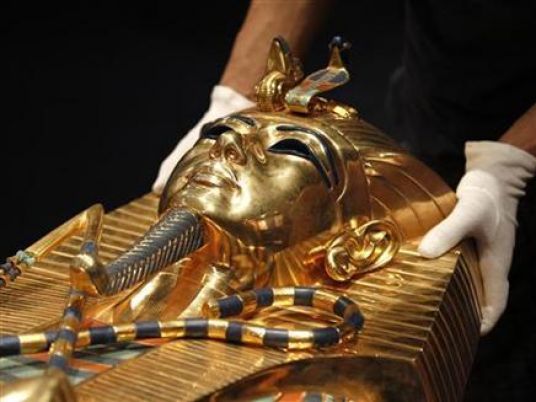https://egyptindependent.com/tutankhamun-for-sale/
Tutankhamun for sale

When Christie's put for sale the bust of the god Amun depicting the king and golden Pharaoh Tutankhamun, all lovers of Egyptian antiquities shouted in the faces of those at Christie's action hall, asking that they not auction the bust. Thousands of Egyptians have objected to the announcement.
Amr Adib – the Larry King of Egypt – shouted when he heard of the sale of the bust of King Tut, and called on Antiquities Minister Khalid al-Anany to intervene and stop the sale. Immediately, Anany invited the National Committee for Retrieving Antiquities to convene.
Several important decisions have been issued, including the Ministry of Foreign Affairs' decision to take action to stop the sale. Prosecutor General Nabil Sadiq and Anany have begun to cooperatively file a case to stop the sale.
I have been contacted by several international newspapers to express my opinion on this subject. Here I must explain that the tomb of Tutankhamun was found with 5,398 artifacts inside. There is no single artifact made of stone, and the quartz coffin is the only stone piece in the tomb.
There are many statue busts belonging to King Tutankhamun, including busts shaped like the god Amun with the face of Tutankhamun, granite busts in the Metropolitan, and other pieces that reside in the Louvre Abu Dhabi.
This bust may have come from the Monto Temple, north of Karnak, or the Temple of Mut, south of Karnak, or maybe even from inside the Temple of Amun in Heliopolis. All studies so far indicate that this bust came from the Karnak Temple after 1970.
The head has been exhibited in two exhibitions in Europe, the last of which was Wildung's in the Egyptian Museum of Berlin. The bust was published scientifically in 1986.
I do not think that Christie's Hall has any evidence of this bust exiting Egypt legally, for the very simple reason that it could not have been exported from Egypt through the Egyptian Museum at the time, as it was before the Antiquities Act of 1983. The export would not have been allowed to happen to a bust on the level of that of Egypt's most famous king, Tutankhamun.
In addition, the UNESCO law states that any country has the right to recover any antiquities that exited its territory after 1972; therefore, this bust can be claimed by right by Egypt.
The manner in which the bust was auctioned in Christie's hall, valued at four million dollars, was unethical, because the auction was for an artifact of the most famous Egyptian king, King Tutankhamun, and the rightful owner of the bust was not disclosed.
I have mentioned in conversations that the owner of this bust and Christie's Hall might enter history by gifting this bust to Egypt rather than facing legal prosecution by the Antiquities Ministry.
The fame of this king might be the reason that all Egyptians and even the whole world are against the sale of the bust. The golden pharaoh, whose image rests in the hearts of people across the whole world, cannot be put for sale.
The most important thing we draw from this case is the united stance of all Egyptians against the sale. Even the international press stood with Egypt. The quick move from Khalid al-Anany inspired us to applaud him and Nabil Sadiq. All this showed us that the artifacts of Egypt are accounted for and in safe hands.
Tutankhamun is not for sale.
-- Sent from my Linux system.
No comments:
Post a Comment